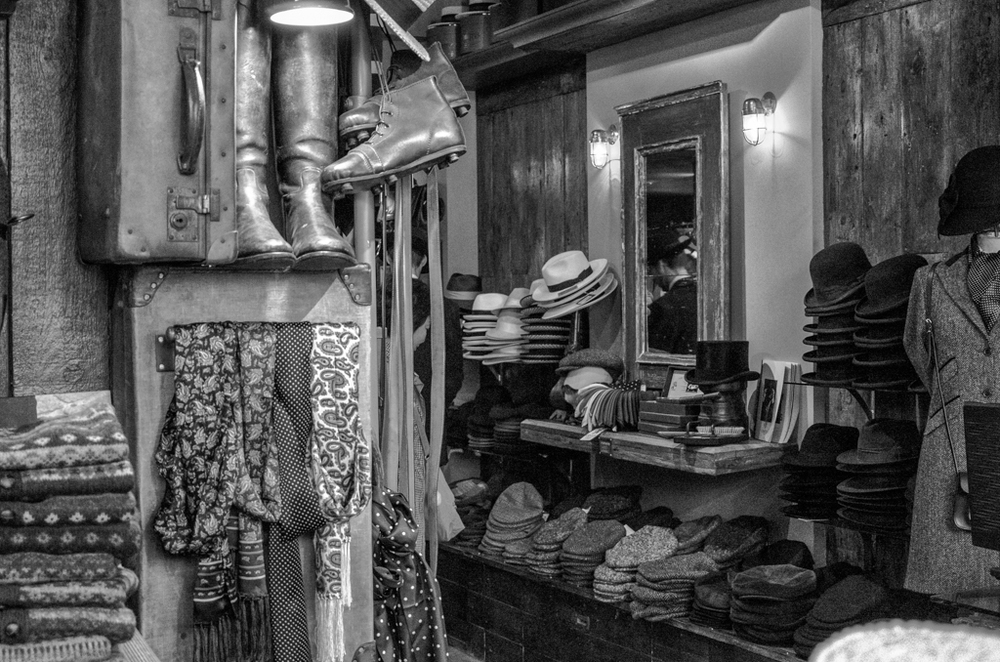
Back in late 2012 the rumour mill was grinding along on hopes of a new APS-C system camera from Leica. The subsequent rather inept leaking of the “mini M” camera in the Spring of 2013 set the enthusiast pulse racing and it is no secret that the new baby, the X Vario, came as something of an anti-climax when all the facts were known.
From the start, the X Vario had a difficult time because of the overweening level of expectations. It has proved to be a solid, reliable and highly usable camera with excellent image quality. Yet, in some respects, it is still condemned simply for not being the system camera the market was waiting for.
Advent

A year later and the long-awaited system camera did arrive, out of the blue, in the form of the Leica T. This polished body offered a radical approach to camera control, relying almost entirely on touch-screen input.
It was accompanied by two excellent T-mount lenses, a superb 23mm (35mm equivalent) f/2 prime and a high-quality 18-56mm zoom (27-85mm) which offers very much the same impressive performance as the X-Vario’s 18-55 lens. The system has now been enhanced with two further zooms, a wide-angle and a telephoto, and is looking good for the future. At the moment, however, the system depends entirely on one rather unusual camera, the T.
I loved the Leica T when I tested it last year and I know a number of enthusiasts who have taken it to heart. However, there is no doubt that many more have ignored the T because of its unusual appearance and radical approach to control. The T has not been embraced wholeheartedly by the traditional Leica user, nor has it created the waves of desire among the Luis Vuitton brigade. It has sold, but I would argue it would have done better with a more traditional body.

Broaden appeal
The T is said to have been designed to broaden the appeal of the brand and was not aimed primarily at the existing Leica user. If so, this was shortsighted.
It is the enthusiast who talks, writes and blogs about Leica, not the casual boutique customer who is out for a bit of style and fancies the red dot, irrespective of cost. Sell the system to the traditional Leica market, make it good enough and the resulting publicity will do the job of broadening the appeal of the brand.
This is where the T-X comes in. I am no engineer but I believe it would be relatively easy for Leica to adapt the body of the X Vario and X cameras to accommodate a T-lens mount. The lenses are already here, it’s just the camera that’s missing. Or, to be more precise, the body is actually here as well; it just lacks a system mount.
I believe such a camera would be welcomed, especially if Leica took the opportunity to root out the modest flash unit and replace it with an in-body electronic viewfinder. Obloquy is heaped on hot-shoe-mounted viewfinders from all directions; only Leica does not appear to notice.
Whether or not the hewn-from-solid T succeeds in the long run, the addition of a more traditional body would ensure the future of the lens system by broadening its appeal. Leica has obviously put a lot of effort into developing these APS-C lenses and I have not read a word of criticism of them. With the ability to attach them to a more traditional body, such as the common chassis of the X Vario and X, I believe lens sales would soar. You only need look at the Fuji X-T1 and its bank of dials and whistles to see a camera that has speeded the pulse of enthusiasts and which is supported by a first-class lens system.
Viewfinder

It has been said that Leica is reluctant to make a more traditional APS-C system camera because it could hit the market for full-frame M cameras. Perhaps for the same reason, Leica has refused to incorporate electronic viewfinders into its APS-C bodies despite overwhelming demand from users. I do not think the company need worry on either count.
Yet with the existing X-system cameras, Leica has a strong base to build a T-mount dynasty and the only surprise is that it hasn’t done so before now.

X revolution
Leica’s X models, from the X1 in late 2009, through the X2 in 2012, to the X Vario and X, are all great cameras with top-notch image quality. Indeed, Leica started the fashion for small, high-quality fixed-lens APS-C cameras with the X1. The X moniker was soon associated with the dedicated street photographer and it was instrumental in Fuji’s decision to launch the X100 in late 2011. The concept of fixed-lens high-performance but lightweight cameras has taken hold and has been copied by other manufacturers such as Ricoh-Pentax with the GR and Nikon with the Coolpix A. It’s a niche market but a steady earner.
Despite Leica’s early lead, however, it is Fuji that has taken the logical step towards creating a system based on the success of the X100. The Fuji X models have developed into perhaps the best mirrorless system available today. The X-E2 or X-T1 and the supporting lens system are a clear example of what Leica could achieve with its T-mount given the will.
In many respects, Leica is at the crossroads and needs to decide which way to turn. I believe it should be bold and go for a comprehensive APS-C system. It will not harm M sales because the M, with its unique rangefinder, will always be top of the tree.







A very well thoughtful story as we have come to expect from Mike and very much in accord with my own thoughts.
I am a very longterm Leica user and I considered supplementing my superb X 1 wth a T last year but after trying the T I decided to opt for the more traditional XV.The fact that the XV was being offered at a very good price did help my decision making but the T was just too "different" for me.Maybe I am too conservative in my camera appreciation but at the end of the day I am the customer and my decision supports Mike’s thesis.
I was interested to read your thoughtful treatise on the fusion of Leica X and T lines. It might be too revolutionary for Wetzlar, but who knows? I would be interested in such a system. Congratulations on a stimulating and thought-provoking article, which I hope Leica reads seriously.
As you know, I am a cautious conservative when planning future purchases. Despite spurious focus issues with the XV, shared by many I believe, I still run my X1 with the XV. When announced I was excited by the new Leica X until I saw its dimensions and immediately I realised it would not replace my X1 despite its superior lens. With the M-P fitted with 35 Summicron, why be tempted by the X? But that is just me.
I took the liberty of sending my brother a link to your interesting account of your recent steam trip to Carlisle. He is a serious steam enthusiast and was a volunteer on the restored line between Wymondham and Dereham in Norfolk, so I knew he would be interested. Two years ago I visited Carnforth while touring in Cumbria. Although I was interested in the Brief Encounter museum and station buffet, I found the town a rather sad place and had not made the most of the global appeal of that famous film. Even the railway works had been sold off and were inaccessible. I liked your excellent mono picture of the Duchess of Sutherland which I remember from boyhood days in the Midlands.
Keep up the good work. I enjoy dipping into your Blog for the bits which interest me.
Comments are closed.